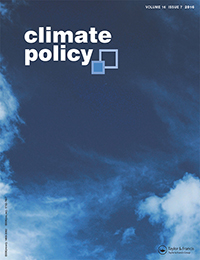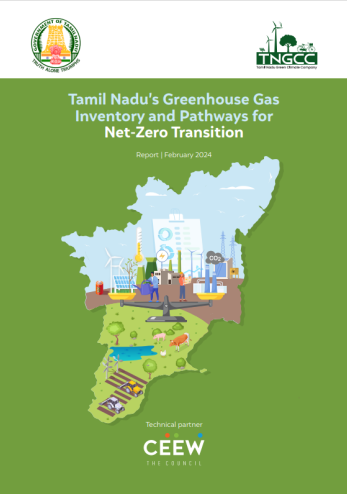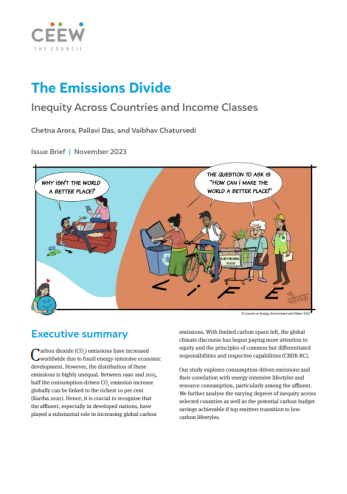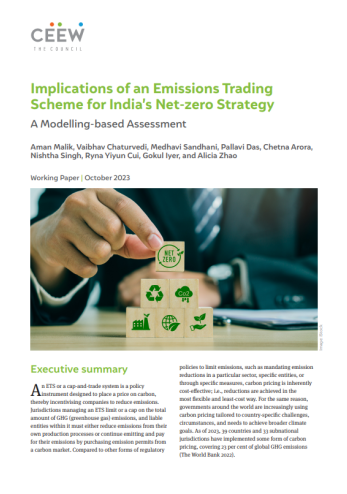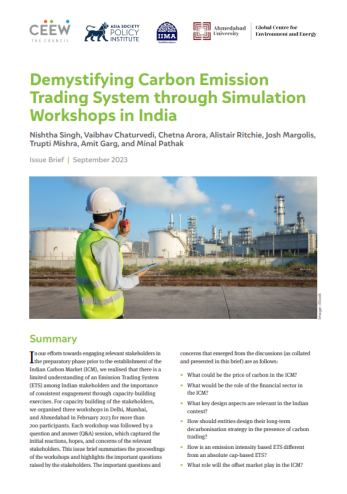Paper
Modelling Long Term HFC Emissions from India’s Residential Air-Conditioning Sector
Exploring Implication of Alternative Refrigerants, Best Practices, and a Sustainable Lifestyle
Vaibhav Chaturvedi, Mohit Sharma
June 2015 | Low-carbon Economy, Sustainable Cooling
Suggested Citation: Chaturvedi, Vaibhav, and Mohit Sharma. 2015. "Modelling long-term HFC emissions from India's residential air-conditioning sector: exploring implications of alternative refrigerants, best practices, and a sustainable lifestyle within an integrated assessment modelling framework." Climate Policy 16, no. 7: 877-893.
Overview
The paper focuses on the residential air conditioner (AC) sector in India. It analyses a suite of Hydrofluorocarbons (HFC) and alternative coolant gas scenarios to understand the implications for greenhouse gas (GHG) emissions from this sector. The analysis is within the integrated assessment modelling framework of the Global Change Assessment Model (GCAM). In addition, it provides a cost-based assessment for informing strategies for lower GHG impact of HCF consumption sectors. The paper also gives policy recommendations to help transition to lower global warming potential (GWP) alternatives.
Key Findings
- If unabated, HFC410A emissions in 2050 will contribute to 36 percent of the total global warming impact from the residential air-conditioning sector in India irrespective of future economic growth trajectory.
- Total emissions, direct and indirect, will be higher in the high growth trajectory by 50 percent compared to the low growth trajectory.
- A move towards more efficient alternative gases will significantly reduce cumulative direct and indirect emissions between 2010 and 2050.
- The associated cumulative reduction in the global warming footprint of the residential sector will be 37 percent during the period 2010–2050. This will be due to gains from energy efficiency as well as low GWP alternatives.
- If high standards of best practices are adopted for minimising leakages during operation and end of life equipment life, then direct emissions can be reduced significantly. But indirect emissions still contribute to a high share. Overall cumulative GHG reduction benefit due to best practices will be fairly limited up to 20 percent.
- Investment in overall building envelop energy efficiency and transitioning to alternative gases can reduce the cumulative emissions by 46 percent.
- Decarbonisation by moving towards low-carbon fuels will lead to a further decline in the global warming impact of the residential sector.
- With lower floorspace, higher air-conditioner efficiency, and improved building efficiencies, electricity consumption can be reduced by 9 percent in 2020, 15 percent in 2030, and 32 percent in 2050.
- The movement towards high energy efficiency and the transition towards alternative gases requires design changes.
Key Recommendations
- The government should give a strong signal to the market that transformation from HFC 410A is to cleaner alternative will happen sooner or later.
- Harness energy efficiency potential of end-use AC technologies. Bureau of Energy Efficiency (BEE) and other relevant government authorities should analyse the reason for low penetration of high efficiency equipment and take steps to increase their market share.
- BEE should extend building energy conservation codes policy to the residential sector immediately.
- Provide information on AC coolant recharge frequency and recovery of scrapped AC units for better estimation and understanding of direct emissions.
- Regulate and incentivise the recovery and re-use of high GWP AC coolant.
- Adhere to high standards of best practices (followed across the globe) and alternatives to HFCs. This will reduce direct emissions and will significantly bring down the global warming potential scenario.
The associated cumulative reduction in the global warming footprint of the residential sector due to gains from energy efficiency as well as low GWP alternatives will be 37 percent during the period 2010–2050.




